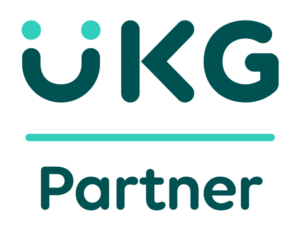What is burnout?
In 2019 the World Health Organization recognized “burnout” as an occupational phenomenon. Workplace burnout is work-related stress that leads to physical, emotional, and psychological symptoms. These symptoms include fatigue, apathy, anxiety, loss of identity, and an impact on professional performance. Accidents, absenteeism, lower productivity, employee turnover, workers’ compensation, and direct medical, legal, and insurance expenditures all contribute to the $300 billion annual costs of workplace stress and burnout in the United States.
“Burnout” is not classified as a medical issue, although it can be the result of something like depression, anxiety, or other underlying conditions. According to researchers individual traits, personalities, family situations, and demographics can impact who experiences work burnout. Workplace burnout may have a negative impact on physical and emotional health, regardless of the source. Burnout impacts people in every sector and every job role, from cashier to CEO – we all can experience the effects of burnout exacerbated by the pandemic.
What causes burnout?
Burnout is caused by a variety of factors, the most prevalent of which are:
- Too heavy or unfair workload
- Undue pressure from management
- Ambiguity or conflict in roles
- Poor management or organization
- Poor work-life balance
- Disconnection between values among employees and organization
Spotting workplace burnout and its effects?
Workplace burnout may be hard to spot, especially in a large organization with hundreds of employees working remotely. The pandemic has been hard on every person, and your employees may be carrying a heavy load on their shoulders on top of their work commitments.
Burnout can also be contagious and spread among employees and teams who feel that their managers or the organization as a whole are ignoring their concerns. When left unaddressed, workplace burnout can cause serious repercussions for both employees and the organization as a whole. For employees, burnout can cause anxiety, fatigue, insomnia, irritability, depression, alcohol or substance abuse, and many more negative outcomes. Organizations can do a lot to prevent burnout among their employees by considering the tips below.
How organizations can help prevent burnout
1. Encourage a work-life balance with wellness benefits
Work-life balance and wellness are key factors to prevent burnout. Wellness is often seen as a perk by HR rather than a company-wide standard, however, a workplace that does not prioritize employee wellness can exacerbate burnout.
While there are other factors that influence the employee experience, such as culture, training, flexible work, physical space, fringe benefits, and so on, compensation and benefits remain a major factor. To recruit and retain top performers while preventing burnout, a well-communicated and well-balanced salary and benefits package are essential.
Helpful benefits to help reduce burnout and show employees you value their mental health may include:
Adoption assistance
Employer-provided meals
Medical, dental, vision insurance
Disability insurance
Financial wellness program
401(k) plan
Life insurance
Concierge services
Paid leave
Stock options
Discount programs
Health reimbursement
Bonuses matching
Flexible spending account
Tuition assistance
Learning and development
Health savings account
Accident insurance
Career-advancement opportunities
Dependent care program
Pet insurance
Mobile phone
Employee assistance program
Legal assistance
Company vehicle
Relocation assistance
Onsite childcare
Company equipment
2. Focus on employee engagement
Deloitte notes that 80% of executives rate employee engagement as important for their company, but only 20% feel that their employee engagement is excellent. Employee engagement is a measurement of a company’s connection with its employees. Gallup also points out that only 34% of employees believe they are engaged at work. Employees that are more engaged do a better job and are more productive. Better employee experience, according to Gallup, leads to higher employee engagement.
Most companies want to know and forecast if individuals are eager to invest (their time, energy, and intelligence) in the firm, and engagement directly informs this. A survey by Great Place To Work asked the question – “What is the most important thing that your manager or company currently does that would cause you to produce great work?” Tellingly, 37% of employees responded that they want personal recognition. Only 7% answered that they wanted more pay. This is why employee engagement is so important.
3. Monitor employee workloads
Managers must guarantee that staff are not given unrealistic workloads or forced to work long hours. While workloads may increase on occasion, staff cannot be expected to keep up with excessive workloads and tight schedules on a consistent basis. Monitoring an employee’s travel itinerary, for example, can encourage management to offer a week in the office to relax. A high level of turnover in a department may suggest a workload or scheduling issue. Unlike other countries, Americans are not likely to take a long vacation even if they have the time available.
Over half of American workers did not use all of their vacation time in 2017. The causes for this are usually related to job responsibilities—an overburdening task, a lack of work coverage, or a fear of being replaced. Employees might be encouraged to utilize their vacation time in a variety of ways by their bosses. To begin, run a report to determine employees’ vacation time that is about to expire or is being squandered. Encourage workers to take vacations vocally, and develop a culture that welcomes, rather than resents, personnel taking time off.
4. Focus on the company culture
It will be difficult to overcome burnout-inducing habits if an organization’s culture encourages employees to work excessively long hours, work during personal time, and generally prioritize work before family or personal commitments. Burnout risks are also associated with feeling disrespected, unsupported, and undervalued in a command-and-control culture, in which leaders drive managers to deliver instructions and satisfy performance standards at any cost. Occupational stress can also develop merely because of uncertainty when information is withheld and dialogue is limited.
Leaders must make the effort to maintain open communication with their staff, ensuring that they receive the proper, accurate updates, are aware of objectives and know how their productivity compares to the company’s objectives. Creating a culture of open and honest communication can go a long way in preventing burnout.
5. Implement flexible schedules and work locations
If possible, organizations should provide flexible scheduling to suit different employee needs. Be upfront about the responsibilities of a job throughout the hiring process so that employees who are hired are aware of them. Providing a degree of flexibility in work location can bring benefits for both employees and organizations. Although many organizations were forced to work from home during the pandemic, many businesses are returning to in-person work.
Employers should consider offering flexibility to employees who have spent the past year and a half getting settled working from home. Some employees may jump at the chance to return to the office while others may feel some anxiety. It is important to communicate with employees about this change and be upfront about expectations. You’ll never please everyone, but offering 1-2 work-from-home days a week may be a favorable strategy to provide flexibility.
In spite of burnout, businesses are recognizing what’s truly important to employees. In addition to increasing salary budgets, they’re also providing more workplace flexibility, excellent employee experiences, and increasing the focus on Diversity, Equity & Inclusion values, and other strategies.




